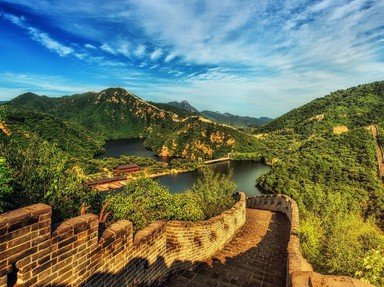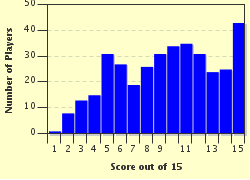Quiz Answer Key and Fun Facts
1. Arising from the Warring States Period, the Qin dynasty reunited China under one emperor. In order to further protect China from invasion, what structure did the Qin dynasty construct?
2. The Qin Dynasty only lasted a little over decade, for the dynasty quickly declined under the paranoid and harsh rule of Qin Shi Huangdi. Which of the following was one of the main actions the emperor took to eliminate any criticism of his rule?
3. Which Han dynasty emperor declared Confucianism the state philosophy?
4. At the decline of the Han dynasty, famine was rampant in the north. As a result many farmers and peasants fled to the south to seek new lives where the agriculture was not in crisis. Because of the large surplus of workers, landowners abused the farmers. What rebellion took place when the farmers were not given better working conditions?
5. Immediately after the Han dynasty had fallen China was divided into three main kingdoms. They all claimed the right to the throne of the Han, and thus fought over it. Which of the following was NOT a kingdom during this period?
6. At the end of the Jin Dynasty, China was still divided, but it consisted of two main empires. Despite the constant warfare, there was quite a lot of cultural and scientific development. Which of the following developed during this period?
7. The next dynasty in Chinese history that reunited the entire empire was the Sui Dynasty. This dynasty was like that of the Qin Dynasty in the respect that it was harsh. It was also hungry for expansion of land. Where did the Sui Dynasty focus most of their invasion?
8. The next dynasty, the Tang, had established many trading routes with surrounding Asian societies and European empires. Although this route was not created during this era, the Tang emperors reopened it and encouraged its use. What route was this?
9. Huang Chao had initiated a rebellion during Tang China that weakened the empire, never allowing it to fully recover from the damage. The motive behind his rebellion was that he had failed the Confucian civil service exam and distrusted justice in China, despite the fact that he was well trained. What was the next occupation he chose?
10. In what year did Emperor Taizu take over the throne and establish the Song Dynasty?
11. Further along the Chinese timeline came the Yuan Dynasty. However, this dynasty was ruled by foreigners, the Mongolians. What man is credited with the founding of the Yuan Dynasty?
12. Years later, the Mongolians were forced out of China, and the Ming Dynasty was founded. What was the name of the explorer who led the trading expeditions sent during the beginning of the Ming Dynasty?
13. What group of people conquered the declining Ming Dynasty during the mid to late 1600s?
14. After controlling China, what did the Manchurian emperors claim they had in order to show the Chinese people that they had the favor of the gods?
15. Who was the last emperor of Imperial China?
Source: Author
dijonmustard
This quiz was reviewed by FunTrivia editor
bloomsby before going online.
Any errors found in FunTrivia content are routinely corrected through our feedback system.

